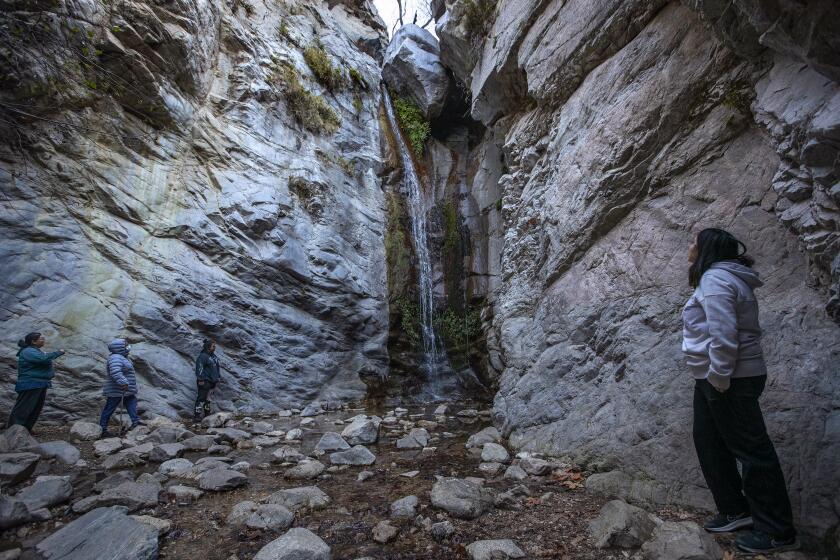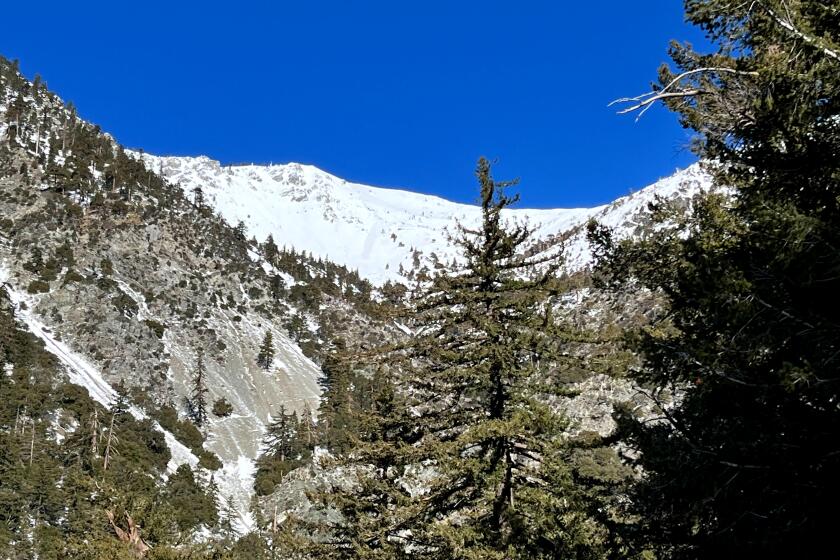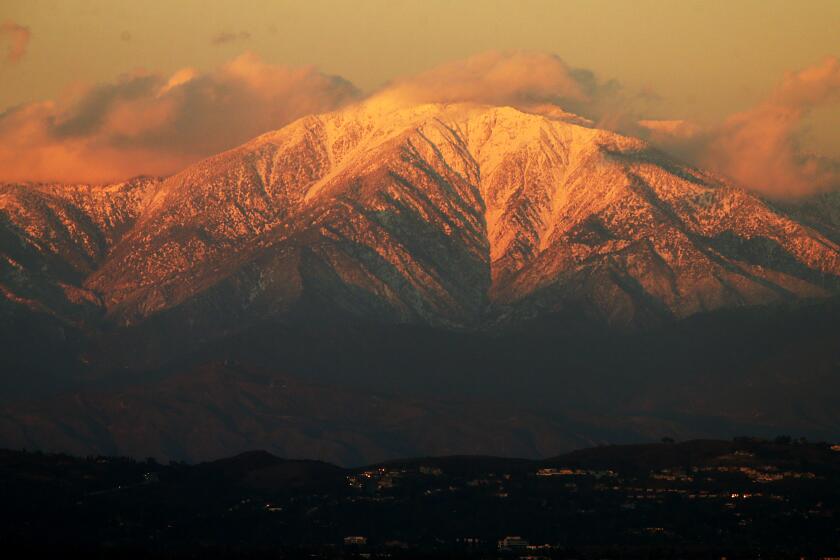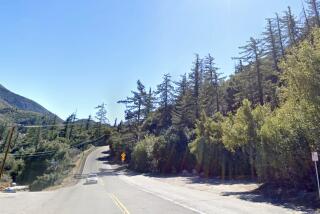Editorial: Winter permits for Mt. Baldy could save lives of hikers — and rescuers

- Share via
This winter has been busy on Mt. Baldy, and not in a good way. Within the course of a couple of weeks, three well-prepared hikers and six under-prepared ones required rescue. And, terribly, a young El Monte woman died while hiking alone during a snowstorm.
Winter temperatures can plunge to well below freezing on the mountain, officially named Mt. San Antonio. It’s easy to lose the trail in the snow, especially in years with heavy precipitation like this one. Others have lost their lives over the years on the narrow ridgeline of Devil’s Backbone, which is treacherous in icy conditions.
Last year, actor Julian Sands, an experienced mountaineer, met his death on the mountain. He was hiking on an icy ridge when his cellphone last pinged; his remains were found five months later in a remote canyon to one side of that ridge.
Biden can bypass Congress to protect an additional 1 million acres in California, including in the desert near Joshua Tree and the San Gabriel Mountains. He should do so without delay.
The 10,064-foot-tall mountain, third highest in Southern California, has been the site of more than 100 rescue expeditions since 2020, and 11 deaths. The search for Sands alone required 500 hours of search time and cost local government more than $100,000. The searchers were mainly volunteers, or the tab would have been much higher.
Some say that hikers who take risks should face the possible consequences, including death. But that argument doesn’t hold up. As a society, we feel impelled to help those in peril, even if it is costly and potentially dangerous to rescuers. It’s the moral thing to do. But a rescuer died on Baldy in 2019. So did the hiker.
The San Bernardino County Sheriff’s Department estimates it has spent more than $3 million in the last five years on rescue operations. As a result, Sheriff Shannon D. Dicus has proposed closing access to the mountain when conditions are hazardous, or at least requiring special permits. That would need the agreement of the U.S. Forest Service, which hasn’t been keen on the idea. Open access to a wide range of activities is part of its mission, and when regional and state parks close trails after heavy rains, for instance, area hikers can count on the forests to remain open.
There have been 15 rescues and two deaths near 10,064-foot-high Mt. Baldy in 2023. Hikers need to think of rescue workers and stay away.
Closing the mountain, except under drastic conditions, would be too restrictive — and impossible to carry out, given the multiple routes there. It’s horrifying to read about people dying on the mountain. What we don’t generally hear about are the many well-prepared hikers who meet their adventure goals and return home safely under their own steam.
Requiring permits for hikers in winter, though, could be a useful way of reducing the number of deaths and injuries. In order for it to succeed, the Forest Service would have to make the process easy and inexpensive, and use the permitting process to educate rather than restrict access or punish violators. Ideally, hikers would be able to buy these online and either print or download to their smartphones.
This would be an opportunity to make sure hikers are prepared and understand the risks. It could be done by requiring that they view a short video, read some information and answer a few questions to show they understand before they are allowed to purchase the permit. They could learn about how to handle the most treacherous parts of the trek, about the need not just for crampons in snowy and icy conditions, but for crampon-compatible boots, when to carry an ice pick rather than stowing it with their packs and the dangers of solo hiking in snow and storms.
Mt. Baldy towers over Southern California, beautifully decked with snow. Easy access helps make it one of the three deadliest peaks in the U.S. This winter, rescue crews have been busy.
A Forest Service spokesperson said there are too many routes to Baldy for permits to be effective. That’s a legitimate point, but there are key access points where warning signs already are posted and where volunteers are sometimes on site to provide educational materials about dangers. By that point, though, hikers already are there with their plans and whatever equipment they’re carrying. It’s unlikely they’d turn around just because their hiking boots have the wrong soles. Some might skip getting a permit, but if it’s inexpensive and easy enough, they’d have little reason to do so.
There’s no way to make a snow trek on Mr. Baldy entirely safe and no good reason to deprive well-prepared people of the adventure. If people are determined enough, they will hit the trail whether it’s closed or not. But a well-run permit system could reduce the dollar and human cost. If the Forest Service won’t go along with that, it should pick up the tab for the searches and rescues it doesn’t try to prevent.
More to Read
A cure for the common opinion
Get thought-provoking perspectives with our weekly newsletter.
You may occasionally receive promotional content from the Los Angeles Times.













